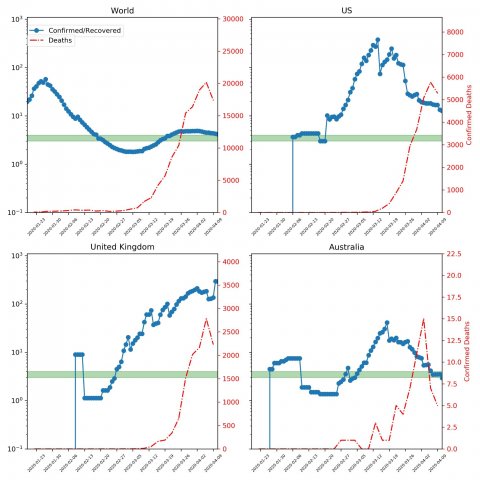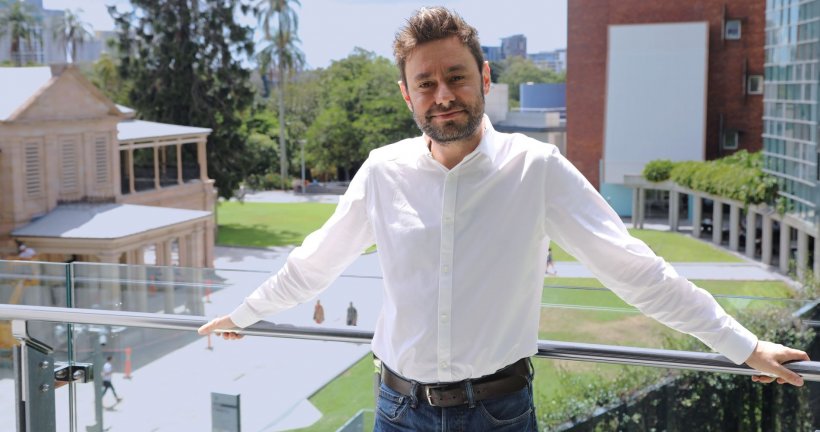Video • Calculating course and resolution
New COVID-19 model predicts light at the end of the tunnel
COVID-19 has infected millions and killed hundreds of thousands of people worldwide, but a new predictor model devised at the Queensland University of Technology (QUT) offers glimmers of hope, suggesting the worst has passed and indicating well under 1000 deaths for Australia.
The team at QUT, led by physician, mathematician and Future Fellow Dan Nicolau, has developed what they believe to be a more accurate model to predict the trajectory of the virus and its mortality, based on reliable, country-independent data. The predictions, updated daily, are available at covidwave.org and look at the ratio of known infections to recoveries in each country. The team then compared this ratio with the number of reported daily deaths in each country.

This country-by-country breakdown also gives a big picture view, which shows that the world is currently in the middle of a second global wave of COVID-19, likely to last for some weeks. Remarkably, the data pattern is the same for most countries, including Australia. “Many other models to predict and alter the course of the virus have been developed, but most depend on numerous, untested assumptions, and their predictions vary wildly. Our model does not do that, relying instead on more reliable, empirical data,” said Professor Nicolau, whose findings have been published on Medrxiv preprints, with the paper currently under review at the New England Journal of Medicine.
“The ratio of known COVID-19 cases to recovered patients will always go to nearly 1:1 over time, because most patients recover. So, that tells us when the worst has passed – if more people are recovering than are getting sick, in other words when the blue curve is heading down in our illustration, things are looking up, at least for now. Mortality rates from COVID, while high for a respiratory virus, are actually low - in Australia, we are looking at less than 1/1000. Almost everyone who gets it recovers after about two weeks. And since it – unfortunately – is about 10 days from illness to death in the minority of patients who do die, it turns out that the peak of the fatalities (red curve) lags that peak in the recovery curves by about 20-30 days.”

Image source: QUT
University of Oxford Professor Mona Bafadhel, a respiratory physician who co-authored the study with Professor Nicolau, added that virtually all countries follow the same patterns, with the confirmed and then recovered cases curve climbing to a peak and then inverting once it passed a level in the mid-hundreds, but at different periods. “COVID-19 is a virus that respects no national or cultural boundaries,” Professor Bafadhel said. “Our data also suggests it was quietly spreading across the globe weeks before the authorities reacted, a lesson to learn for future outbreaks.”
Professor Nicolau and his colleague Alex Hasson, who is leading the data collection for the project, used their model to project an approximate final death toll in hospitals and care homes of 35,000 for the UK, 75,000 for the US but substantially less than 1,000 for Australia, most likely in the low hundreds, by the end of 2020 (barring another major wave). “The development of models like this to understand and predict the course of COVID-19, and other epidemics to come, is vital for us to be able to understand what public health measures, like home isolation and closing borders, to deploy and when, and when life can start to return to normal,” said Professor Nicolau. “Australia has done very well with this crisis, helped by a strong public health response, our relatively lower population density and, most importantly, proactive COVID-19 testing. Less than 100 people have died so far (compared to around 3,500 from influenza in 2019), our case reports have dropped dramatically and this data suggests it could even now be time for local, state and federal governments to actively be thinking about a disciplined plan to loosen restrictions.”
Source: Queensland University of Technology (QUT)
27.04.2020







